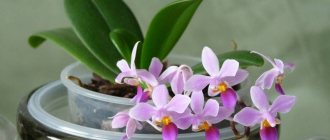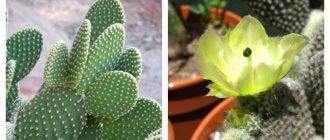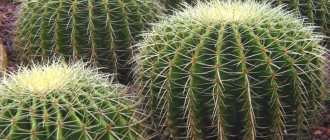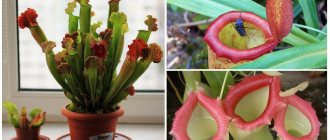Features of cacti of the genus Ripsalidopsis
The history of the genus Rhipsalidopsis is quite complicated. The "Easter cactus" has survived a number of scientific misconceptions. When the first plant species was first discovered and described (in 1884), it was classified as Epiphyllum, later renamed Schlumbergera, then transferred to the genus Rhipsalis, later Epiphilopsis, Rhipsalidopsis and then Hathiora. After numerous changes in taxonomy, cacti have recently been returned to the genus Schlumbergera, although they are still called Rhipsalidopsis, less commonly Hatiora.
The genus Rhipsalidopsis consists of only two species, Rhipsalidopsis gaertneri and Rhipsalidopsis rosea.
These two species belong to epiphytic cacti. They grow in the forests of Southern Brazil, in the states of Minas Gerais, Sao Paulo, Paraná, Santa Catarina and Rio Large del Sul. These places are close to the range of their relatives - cacti of the genus Schlumbergera.
Brief description of Rhipsalidopsis species
Although these two varieties of Easter cactus have almost the same appearance, there are still some differences between them:
- Rhipsalidopsis pink (or "Dwarf Easter Cactus") is a compact, mostly erect, or often arching (or pendulous) cactus with articulated stems.
Photo of blooming Rhipsalidopsis rosea
Flattened stem segments, from 2 to 4 centimeters in length and 1 centimeter in width, during the flowering period (spring) the cactus blooms pink flowers with a diameter of 3 to 4 centimeters. This species was described in 1912 by Lagerheim. - Ripsalidopsis Gartner it is a larger, highly branched epiphytic cactus with a diameter of 30-40 cm with flat stems divided into segments with jagged edges.
Photo of Ripsalidopsis or Schlumberger Gartner
The terminal segments often droop. This species has larger stem segments, from 4 to 7 centimeters in length and from 2 to 2.5 centimeters in width. Bright red flowers, 4 cm long, appear in large numbers in spring, singly or in groups. This species has been described since 1884 by the German botanist von Regel.
What are the differences between cacti of the genus Ripsalidopsis and Schlumbergera or Decembrist
Although two Rhipsalidopsis species have recently been classified as Schlumbergera, there are some visual and flowering differences between them. Due to their external similarity, they are often confused. This often leads to the fact that you may be sold a Schlumberger cactus instead of Ripsalidopsis. Moreover, there are two similar varieties of Zygocactus - Schlumbergera bridgesii and Schlumbergera truncata, which also differ slightly from each other.
How can you tell them apart?
- First of all, this is the flowering period. Rhipsalidopsis blooms in the spring, often during the Easter holidays, which is why it is called the “Spring Cactus” or “Easter Cactus”. Schlumbergera blooms in early winter, before the New Year holidays, accordingly it is called the “Christmas cactus”, “Rozhdestvennik” or “Decembrist”.
- The dormant period is also different - for Decembrist it occurs in February–March, and for Ripsalidopsis from late October to mid-winter.
- Dimensions and appearance of stem segments . Schlumberger's has denticles at the edges of its stems, while Easter Cactus has segments with fine bristles and a smoother, wavy ridge.
If you are planning to acquire this wonderful succulent, pay attention to these features of different species so that you know which plant you are purchasing.
What are the names of plants similar to Schlumbergera?
In terms of the shape and appearance of the flowers, several genera of the cactus family are similar to Schlumbergera, for example, the following.
Lepismium
The stems of this cactus are divided into separate segments, but they have long leaves, longer than those of the Decembrist and branching begins in the middle part. They can be of different shapes and cross sections. Blooms from May to September. It is most often grown as an ampel plant, but can also be grown in a simple pot.
Disocactus (Aporocactus)
The stems are thin, ribbed, with thorns (their number depends on the variety); they can grow up to five meters, but they are pruned and left no more than two. Blooms from February to August. It is grown as an ampelous plant.
The most common and well-known Schlumbergera lookalike is ripsaliplopsis.
How to grow indoor cactus Ripsalidopsis
Unlike many other succulents that we commonly grow as indoor flowers, Easter Cactus are a member of the epiphytic group of succulents. Their habit of living (in trees and rocks) and their special natural habitat mean that they require very different care than their desert relatives: more water and less light. Learn more about growing these epiphytic cacti at home.
Soil requirements
Ripsalidopsis should be grown in a light, fast-draining soil mixture containing sphagnum moss. This type of soil is usually used for Orchids, Bromeliads or other epiphytic plants. To prepare a soil mixture with your own hands, you need to mix fertile soil based on peat moss with the addition of coarse sand or perlite.
Another option is to mix garden humus, turf soil and fine gravel in a ratio of 2 to 1 to 1. Add a little perlite or fine chips to this soil mixture to increase aeration.
Humidity
Tropical forests in which epiphytic cacti grow have high humidity; this is worth remembering when deciding on the location of the flower pot. During the summer, the air in your room may be too dry. Provide humidity by placing the plant in the kitchen or misting it daily to provide at least a little extra moisture.
Lighting
Rhipsalidopsis loves filtered light, so keep its stems away from direct sunlight. However, additional lighting in early spring stimulates the blooming of flower buds.
Cactus care information
Epiphyllum cactus: how to grow a charming flower correctly
How to water cacti correctly to avoid mistakes in care
How to properly use fertilizer for cacti at home
Temperature
From October to March, the minimum temperature in the place where the flower is kept should be reduced to approximately 10 °C. If you do not follow this regime, the Easter Cactus will not bloom. From March to October, maintain the temperature between 15 and 25 °C. At temperatures above 25 °C the plant is prone to wilting, although it can tolerate heat up to 45 °C.
Remember! Rhipsalidopsis is a tropical plant, which means it does not tolerate low temperatures well.
Hydration
"Easter" requires abundant summer watering, but you need to wait for the soil to dry out slightly between treatments. During the flowering period, keep the plant moist (but not overwatered). Constantly wet soil will quickly lead to root rot.
The only exception is the period after flowering. To give the plant some rest, limit watering for about a month.
Your exact watering schedule will depend on the amount of light your cactus receives, but watering once or twice a week is optimal.
Fertilizer
You can feed the Easter Cactus approximately every two weeks using a balanced liquid fertilizer. Stop feeding during the rest period. Resume fertilizing as soon as the flowers bloom.
Pruning Tips
Pinching dead flowers is done as they dry out. Pruning is not necessary unless you want to control the size of the plant. Once your Rhipsalidopsis reaches the maximum size you want, trim the outer segments of the plant's stems to maintain its shape.
Transfer
Easterflower blooms best when its roots are contained in a somewhat cramped pot, but it should still be repotted every two years into fresh potting mix using a pot one size larger. Replanting should be done in mid-summer after flowering or in autumn.
Flowers
Both Schlumbergeras (Buckley and truncated), despite differences in leaf shape, have the same flowers. Ripsalidopsis flowers are completely different from them.
Decembrist flowers grow from the tops of the shoots and hang down. The central part of the flower has the shape of a tube, and the petals have several levels and are bent back. The flowering period is long.
In ripsalidopsis, flowers grow from different parts of the shoot, including from the tips. In this case, the flower heads do not bend towards the bottom, but are directed upward.
Ripsalidopsis flowers have a regular star shape. They have a pronounced aroma. The flowering period is short.
How to get Rhipsalidopsis to bloom
Flowering of the "Easter cactus" is caused by both a limited amount of light and fairly low temperatures. Your plant needs equal amounts of darkness and light for eight weeks before spring bloom. At night, aim for cooler, drier conditions, ideally around 13-16°C. And although these plants like warmth, do not place your cactus pot near any heat sources. Starting around January, you should close the curtains completely and turn off all the lights in the room the cactus is in after sunset.
Once buds begin to form, plants should not be moved to a new location with radically different light or temperature conditions, as many of the buds will stop developing and their flowering will be interrupted. Flowers will take longer to open if they are not exposed to high temperatures. Plants should bloom for 2-3 weeks at temperatures around 21°C.
Leaf shape
The second difference between Schlumbergera and Ripsalidopsis can be the shape of the segments (segments) of the plant shoots. If the segments have pronounced sharp teeth (antennae), then this is definitely a Schlumbergera, a hybrid from Schlumbergera truncata. But if the teeth are smoothed, then... don’t rush to think that this is ripsalidopsis!











